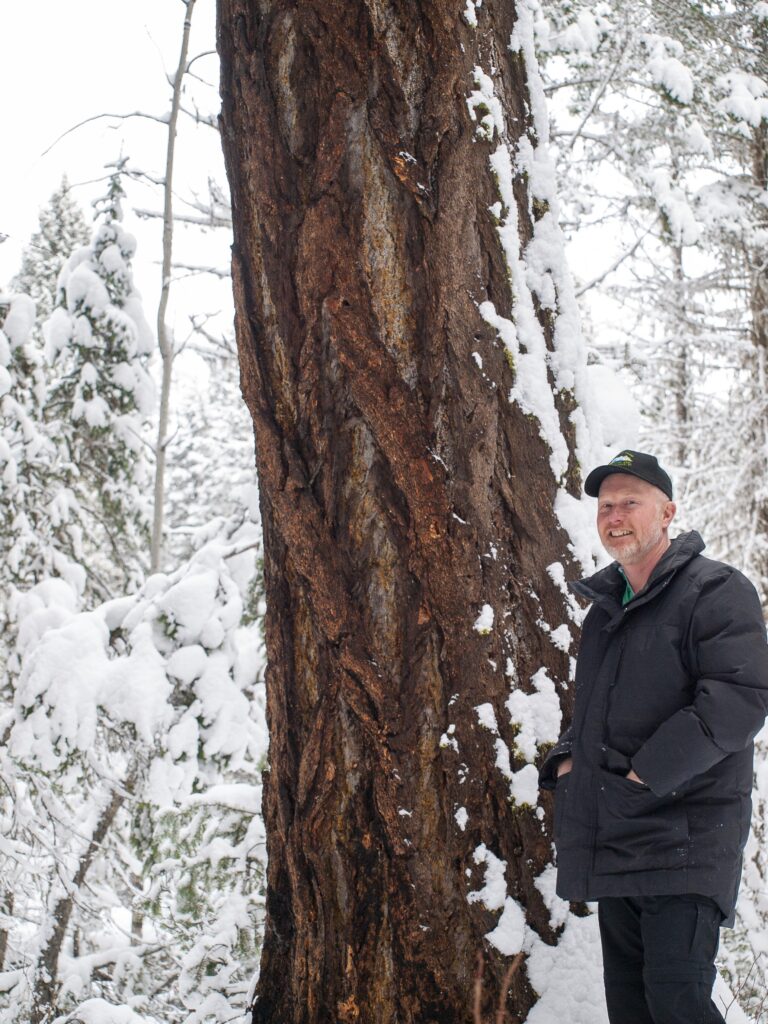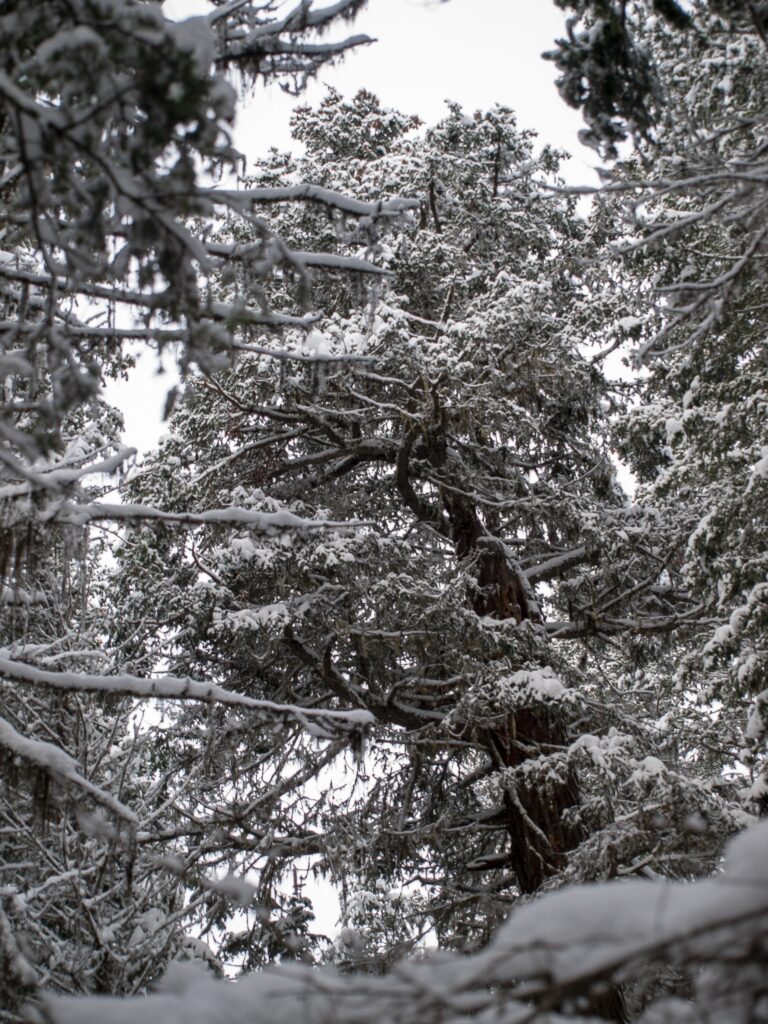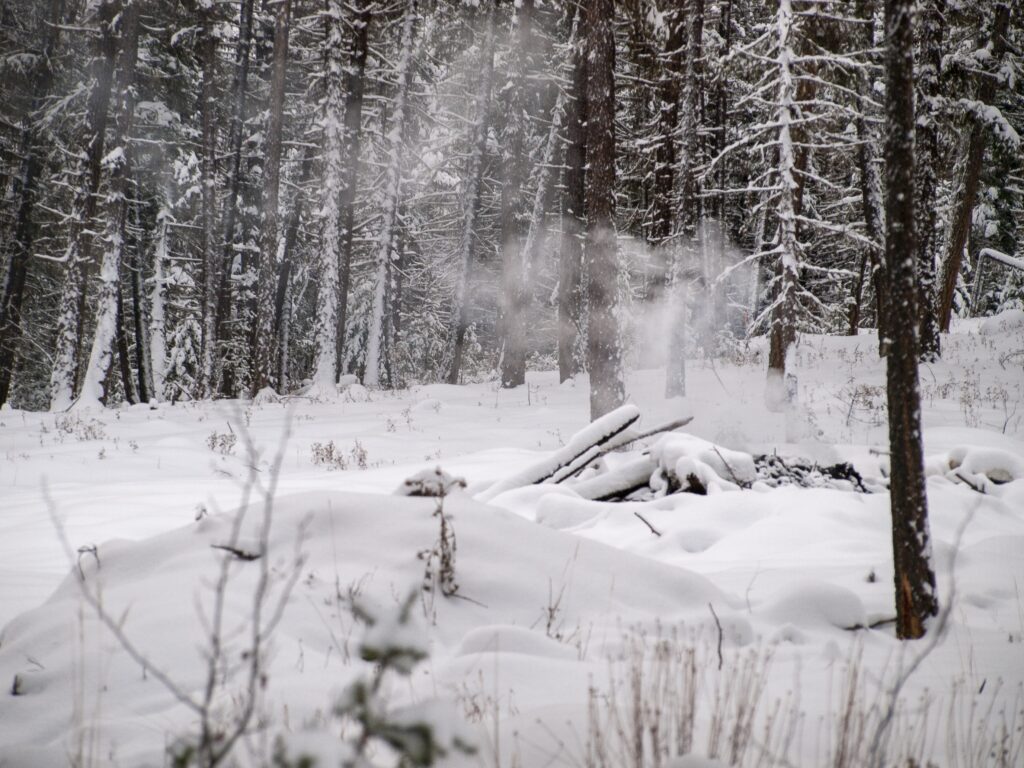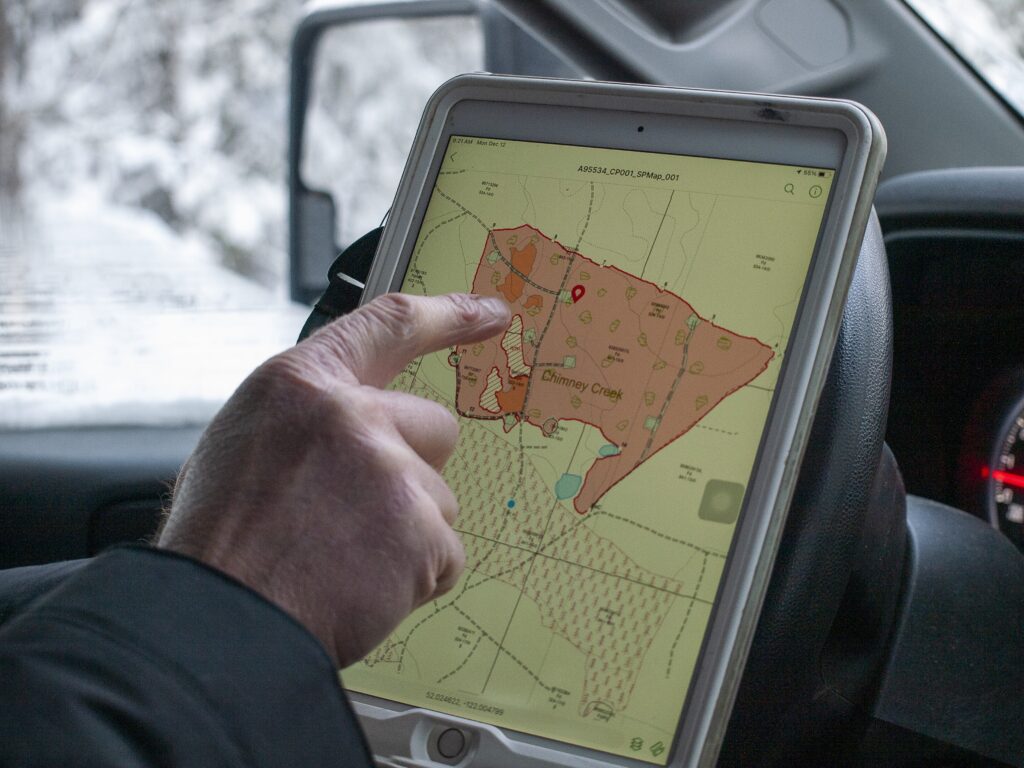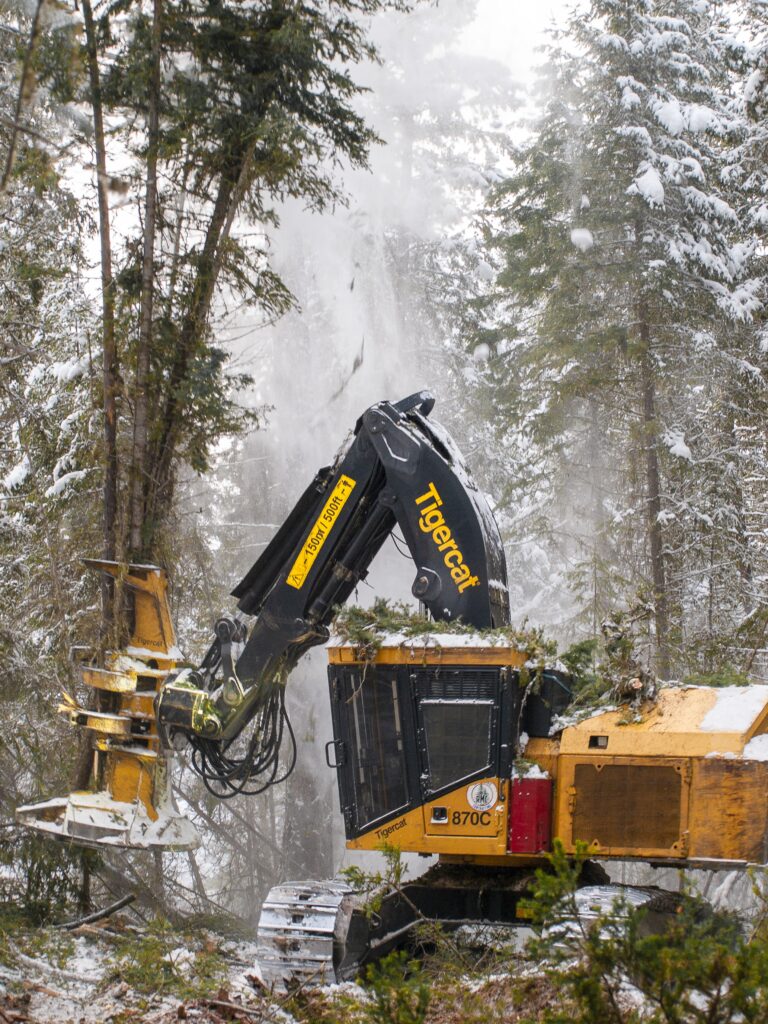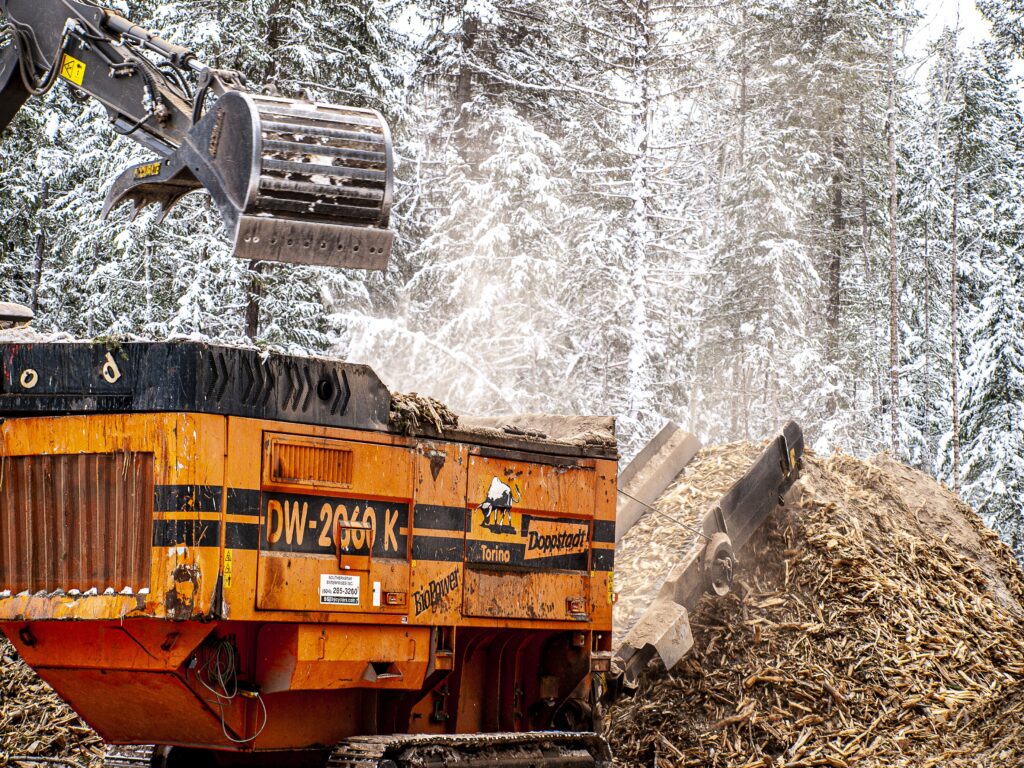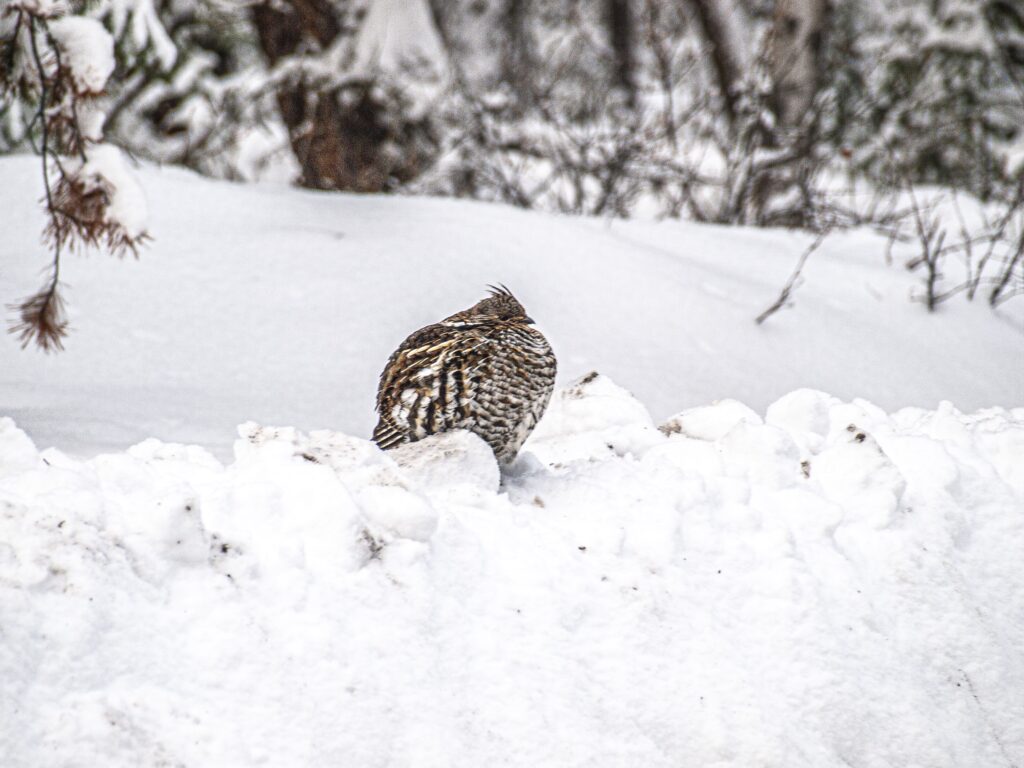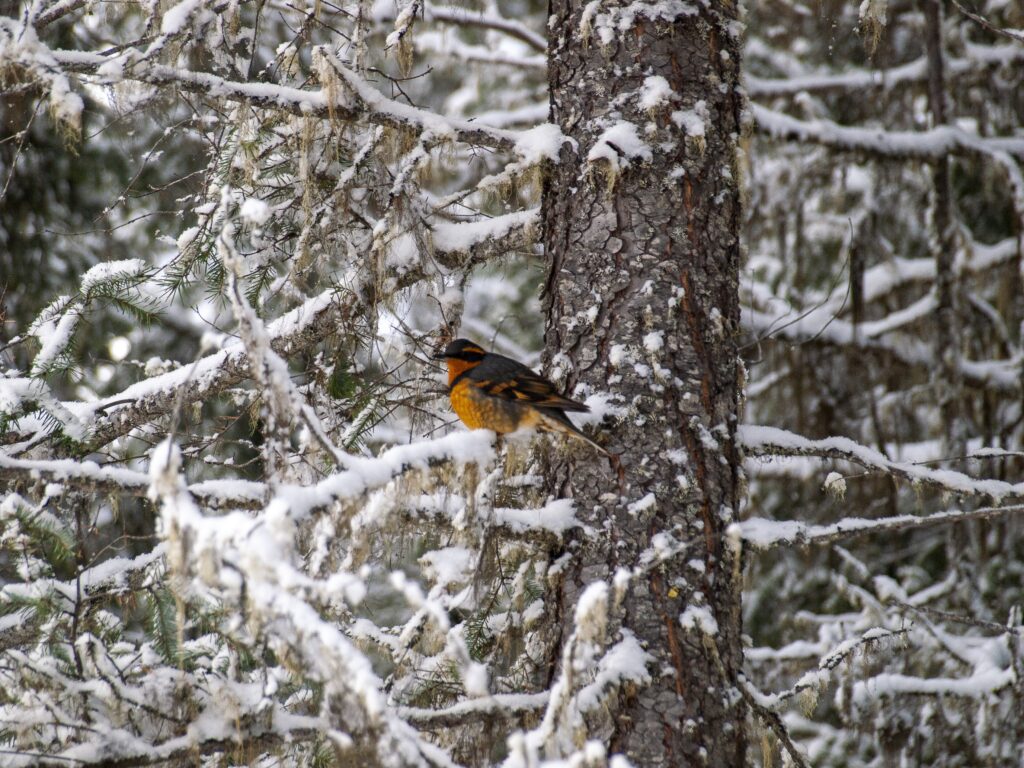Bringing Fire Back to the Land
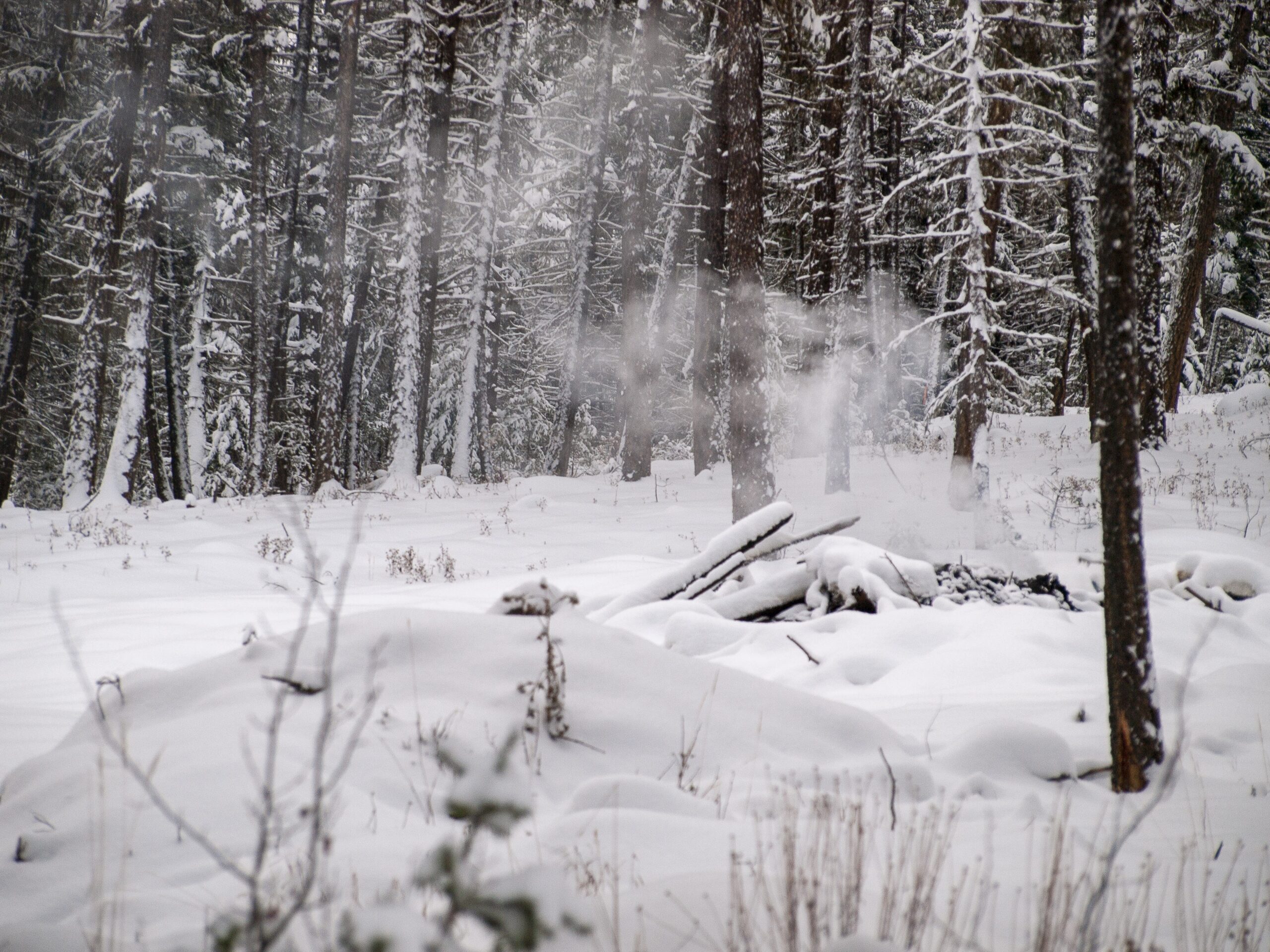
Once all but snuffed out, T’exelcemc Fire Stewardship practices are coming back into practice, bringing new life back to the landscape.
The last time pillars of smoke hung over T’exelc and Williams Lake was the summer of 2017, when sudden lightening strikes sparked numerous wildfires throughout the Central Cariboo, leading to evacuations, property damage, and the loss of at least 60 homes. But when a similar plume rose from the horizon in the fall of 2022, it was met with welcome eyes.
Word had gotten around about the source of the smoke. The Williams Lake Tribune told readers that it wasn’t from a wildfire, but from (as the newspaper called it) a “controlled burn” being performed near Bond Lake by Williams Lake First Nation. Rather than doom and gloom, the smoke signified a historic shift; a shift away from a time when Indigenous fire stewardship could land you in jail, and towards a future when our forests are once again rich with diverse species of medicinal plants, protected from drought and wildfire, and are nurturing spaces for endangered animal habitats that once thrived in the area.
Then and Now
Tree-ring data from the Ne Sextsine (Flat Rock) area has been analyzed to assess the frequency and intensity of cultural burning throughout history. There is clear evidence that regular burning was carried out by the Secwépemc from before contact until the practice was outlawed in 1874. A given area would be burned as a form of routine land management every four to 18 years, with burning happening in the safety of spring or fall, timed carefully around seasonal animal migrations.
The intensity of each burn was assessed by researchers as “low,” “moderate,” or “high.” Most of the burns were low-intensity, with hunting areas being identified as more “moderate” due to a decreased burn-frequency in those zones. Trails that saw regular use, as well as community areas were burned more frequently, and at a lower intensity.
When the Bush Fire Act of 1874 was rolled out in British Columbia, it was prefaced as a safeguard against wildfires started by locomotives and industry. The real, racist rationale behind the law was not so well hidden. The law stated that anybody lighting a fire in the woods (be it on private, reserve, or crown land) or allowing a fire to burn in the woods could be fined up to $100 (about $2600 today) or jailed for up to three months; this at a time when Indigenous fire stewardship was commonplace. The law aimed to assimilate Indigenous peoples into colonial society while pacifying the fears of settler ranchers and property owners. It passed not long after smallpox hit the T’exelcemc, knocking the population back by two-thirds. Between these two factors, fire stewardship came to a halt in Ne Sextsine.
Prior to contact, forests were more vast and open, with fewer, larger trees, and much more space between them. Elders have reported that one could easily ride a horse or pull a wagon between two given points without a trail. With wildfire suppression, forest understories become a thicket of dense brush. The bottom limbs of large trees become stressed from the pressure of the undergrowth, and the abundance of material allows fire to “ladder” to the crowns of trees. Fire-starved forests are more susceptible to insects and diseases, which further intensifies the risk. Laddering can quickly cause a wildfire to escalate uncontrollably. These are the types of fires that led to Williams Lake’s 2017 evacuation, and the utter irradiation of the Village of Lytton in 2021.
For as many as 15 years after a burn, deer will favour burned areas in the summer months due to the wealth of young foliage for food. This is true even of land that has been completely ravaged by high-intensity wildfires. In the winter months however, deer will avoid areas that are too open, as it leaves them vulnerable to predation. Their small hooves sink into deeper snow, making them an easy target in open areas. In a forest that is comprised of widely-spaced, larger trees, the crowns of the trees intercept the snow as it falls, making the land easy to navigate by mule-deer. This makes a forest that has been regularly burned the perfect middle-ground for deer habitat; easy to get around, and rich with green growth for food.
The effects of fire suppression are also felt in the grasslands. Grasslands make up less than 1% of the province geographically. Such areas are hot and dry in the summer months, which limits the natural growth of tree seedlings. Grasses however, flourish in such regions, as they are adept at capturing moisture in areas where it’s scarce. From birds, mammals, reptiles, mosses, lichens and algaes, the ecosystems that develop around these grasslands are rich, but fragile.
Before contact, Indigenous burning played no small role in maintaining Cariboo grasslands as distinct ecological networks. Fires from lightning strikes and cultural burning regimes would traditionally pass through Cariboo grasslands every 10-20 years. Tree seedlings that might have taken root would be largely eradicated, allowing the grassland species to regenerate and reign supreme. When regular fires were halted, there was nothing to stop trees and brush from encroaching on the grasslands, putting the whole ecosystem in jeopardy. Since 1962, some Cariboo grasslands have receded by more than 30% due to this “forest invasion.” Grasslands support around 33% of endangered species in the province; more than any other type of habitat. Badgers are now so rare in the Cariboo that they’re practically the stuff of myth. Burrowing owls, which rely on abandoned badger holes, are now extinct in the region.
Using the Past to Guide a New Way Forward
A commonly held idea in forestry is that whether you’re logging, burning, replanting, or whatever else, it’s best to do so in ways that mimic nature. Imitating the patterns of nature tends to decrease unforeseen ripple-effects. It seems that globally, we’re at a moment of reckoning. With uncontrollable wildfires lighting up the headlines every summer, the world is finally coming around to an understanding of forest stewardship that’s been held by Indigenous peoples for millennia: fire has its place on the land and interfering with that is interfering with nature.
WLFN recently completed treatments near Bond Lake and Thunder Mountain, and a similar treatment is in progress near Brunson Lake. The total area of these three treatments is about 505.3 hectares (180.3 ha for Bond Lake, 124.4 ha for Thunder Mountain, and 200.6 ha for Brunson). The three land treatments have a common goal: they impart a holistic view of land-management by rolling forestry, environmental stewardship, biomass production, and wildlife preservation into one. Stemming from these treatments, WLFN has already been asked by the Ministry of Forests to conduct a similar treatment in an area affected by spruce budworm near Pablo Creek.
The process starts with a question: what did forests look like 150 years ago? WLFN’s recent treatments seek to provide an answer to this question.
Driving around the Thunder Mountain lands, WLFN Stewardship Forester John Walker points out a dense patch of non-treated forest. These small islands of thick brush are left every 125 meters or so, as a visual break for animals. They give wildlife protection by obstructing sightlines from predators. These untreated patches are so dense, even walking through one would be difficult.
In a traditional clearcut, larger trees are the cash-cow. But in the style of treatment WLFN has been conducting recently, the larger trees are left exactly where they are. Most trees under 25cm in diameter are taken out. A few trees (less than 10%) that are 35cm are taken out as well. The goal is to nurture the older, larger trees, while opening the landscape for other species. The smaller trees are the ones that would have previously been knocked back due to wildfires and cultural burning.
Moss doesn’t require much sunlight and is incredibly hearty. Starving an interior forest of fire results in a forest floor that’s almost entirely moss. Once the area has been cleared by burning, interior forests welcome new growth of arnica, rose, raspberry, sxúsem, varieties of grass, numerous species of mushroom, and myriad other species. Mycelium networks underground becomes stronger, having a greater variety of proteins and nutrients to exchange between plants and fungi.
The trees that are left behind are also rewarded. An overabundance of trees means there isn’t enough moisture to go around. With their longer, deeper roots, big trees do a better job of collecting and storing moisture, safeguarding the landscape against drought. Once their dripline has been cleared of competition, larger trees have an easier time gathering and retaining moisture. Similarly, large trees grab more carbon from the atmosphere and store it in the ground more effectively than smaller trees. Once the small trees are cleared, large trees can perform this task better as well.
A combination of feller buncher and hand-treatment with chainsaw and brush-saw is used for the initial clearing process. Walker notes that it takes a great deal of skill with a feller buncher to carry out this type of work; the operator must regularly navigate tight spaces barely larger than the machine itself.
After the initial clearing is done, a processor sorts the wood by size and quality for market. Timber that isn’t up to par for the sawmill is later ground or shredded. The pulp can be sold off to Atlantic Power as hog-fuel for the biomass-fired generating facility in Williams Lake, or to Pinnacle Pellet to be turned into wood pellets. Adding this step means a huge amount of wood waste is removed from the land and converted into energy in a sustainable way, greatly reducing the carbon footprint of the whole operation.
While beneficial from the environmental angle, it comes at a cost: even with income generated from pulp-sales, the added expense of grinding or shredding the culled timber pushes a treatment like this into the red, making it unfeasible without external funding. WLFN has received extensive funding from government agencies like the Forest Enhancement Society of British Columbia (FESBC) for projects like Brunson, Bond Lake, and Thunder Mountain. For the Brunson fuel break project alone, FESBC contributed $1.5 Million, making projects like these financially viable for WLFN.
Which brings us to burning.
Bringing Fire Back to the Land
From September 22-26, 2022, WLFN conducted the final phase of the Bond Lake treatment. A team of around 35 kept the low-intensity fire moving through the lands, clearing the last of the understory. Although the burn had its share of difficulties to plan around (residential areas, watersheds, and endangered species to name a few), Walker says it went “fairly smoothly.” The plume of smoke was quite a spectacle, towered over the communities of Williams Lake and Sugar Cane.
As we drive through the Thunder Mountain lands, we come upon a slash pile that’s still smoldering from under a thick blanket of snow. It strikes me that the despite being freshly logged, the whole area still looks like a forest. Unlike the stark nakedness of a clearcut, it’s almost serene; vast and open, with large, sprawling trees poking out from the rolling landscape, and the occasional patch of smaller trees filling things out around the edges.
In the short term, the payout from this “thin-from-below” style of logging doesn’t compete with clearcutting. More specialized labour and machinery is involved, and the quantity of market-grade timber extracted is much lower. That said, once an area has been clearcut and replanted, it takes a long time for those little seedlings to become a harvestable forest again. Meanwhile, an area that was “thinned-from-below” could be continuously harvested from year to year, bringing in more income over time than if it were clearcut. Also, no expensive re-planting is required.
In 2020, an informal meeting was held with representatives from Xatśūll First Nation, Williams Lake First Nation, Canoe Creek Dog Creek, Canim Lake Band and Esk’etemc. The meeting was to seek guidance from Secwépemc Youth, Elders and Knowledge Keepers about how the land was managed in the past, and how it ought to be managed moving forward. All in attendance wanted the forests to be more like they used to: abundant with berries, mushrooms, and medicinal plants, open and easy to navigate, and safeguarded from drought, landslides, and uncontrollable wildfires. Less than three years later, and we’re already seeing significant progress towards this vision.
WLFN’s model demonstrates an economically sustainable framework that could be replicated across the country, using both new and old technologies to rejuvenate and safeguard our forests.
Does this mean a new era of Indigenous fire stewardship is upon us? One can hope. These three land treatments only took two and a half years from concept to execution. But, while the CRD and Ministry of Forests didn’t skip a beat issuing the permits, there are no guarantees that conventional cutting permits won’t be issued to other companies for neighbouring blocks, allowing yesterday’s land-management models to continue as the norm. It’s unfortunate that it took several years of record-breaking wildfires to get cultural burning back into newspaper headlines. The good news is that for the first time since colonization, Indigenous Fire Keepers are being looked-to for the expertise they’ve held for millennia, and their time-honoured traditions are once again being put to use. The word is getting around that it’s time to bring fire back to the land. ⸙
